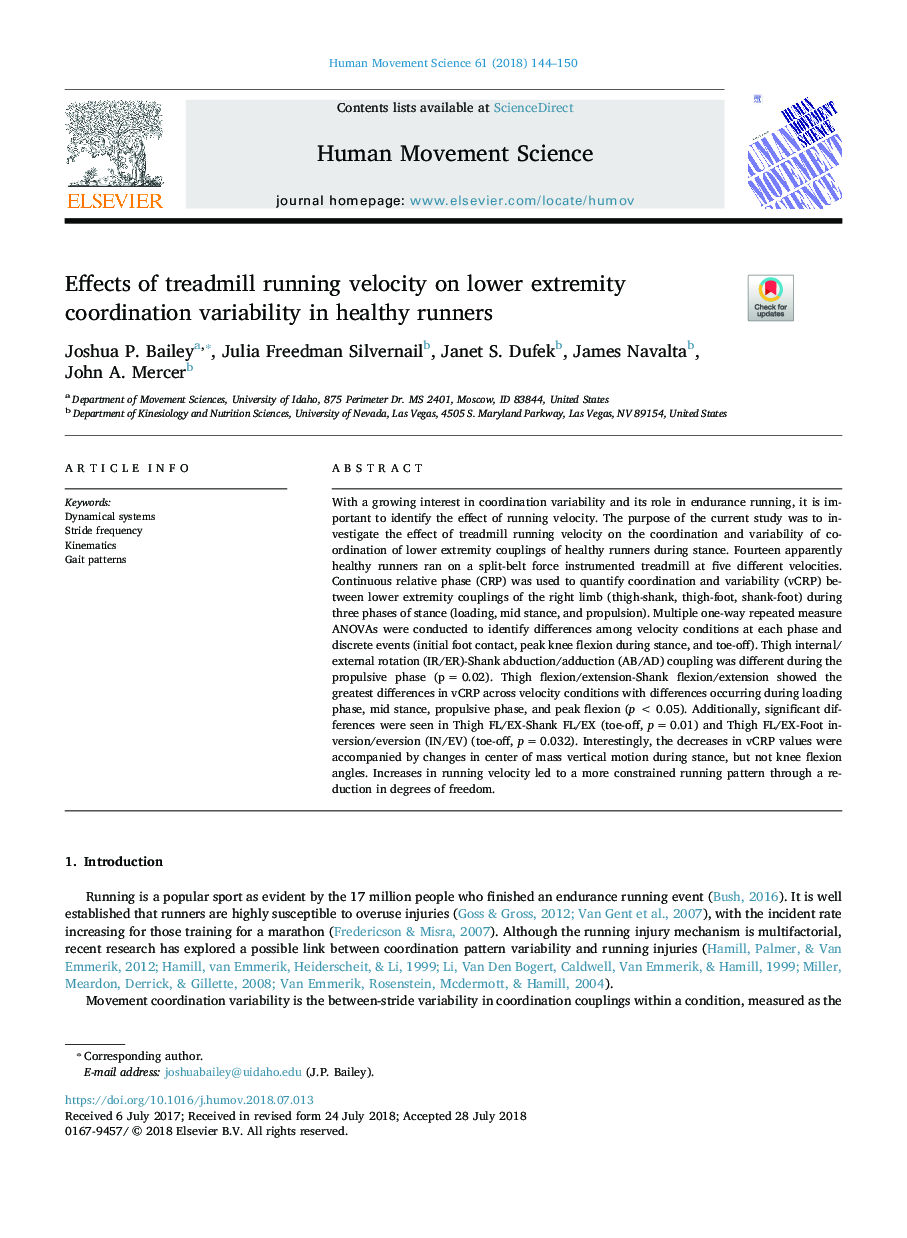| Article ID | Journal | Published Year | Pages | File Type |
|---|---|---|---|---|
| 7290710 | Human Movement Science | 2018 | 7 Pages |
Abstract
With a growing interest in coordination variability and its role in endurance running, it is important to identify the effect of running velocity. The purpose of the current study was to investigate the effect of treadmill running velocity on the coordination and variability of coordination of lower extremity couplings of healthy runners during stance. Fourteen apparently healthy runners ran on a split-belt force instrumented treadmill at five different velocities. Continuous relative phase (CRP) was used to quantify coordination and variability (vCRP) between lower extremity couplings of the right limb (thigh-shank, thigh-foot, shank-foot) during three phases of stance (loading, mid stance, and propulsion). Multiple one-way repeated measure ANOVAs were conducted to identify differences among velocity conditions at each phase and discrete events (initial foot contact, peak knee flexion during stance, and toe-off). Thigh internal/external rotation (IR/ER)-Shank abduction/adduction (AB/AD) coupling was different during the propulsive phase (pâ¯=â¯0.02). Thigh flexion/extension-Shank flexion/extension showed the greatest differences in vCRP across velocity conditions with differences occurring during loading phase, mid stance, propulsive phase, and peak flexion (pâ¯<â¯0.05). Additionally, significant differences were seen in Thigh FL/EX-Shank FL/EX (toe-off, pâ¯=â¯0.01) and Thigh FL/EX-Foot inversion/eversion (IN/EV) (toe-off, pâ¯=â¯0.032). Interestingly, the decreases in vCRP values were accompanied by changes in center of mass vertical motion during stance, but not knee flexion angles. Increases in running velocity led to a more constrained running pattern through a reduction in degrees of freedom.
Related Topics
Life Sciences
Neuroscience
Cognitive Neuroscience
Authors
Joshua P. Bailey, Julia Freedman Silvernail, Janet S. Dufek, James Navalta, John A. Mercer,
